#20th c. russia
Text
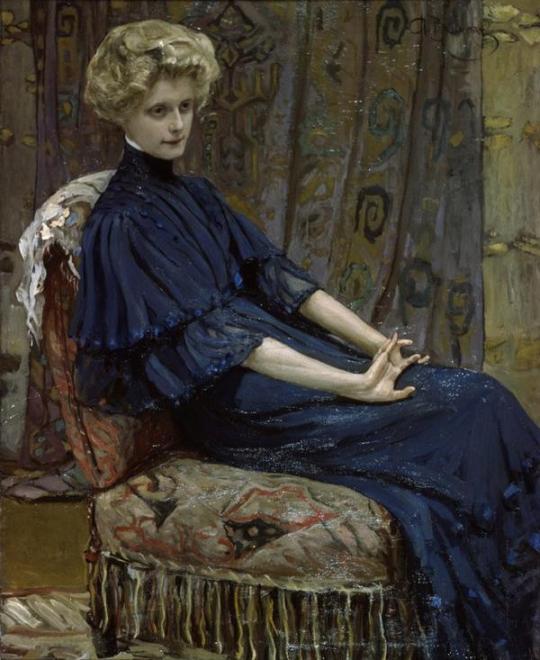
Portrait of a woman in blue by Alexander Vakhrameev, 1910s
208 notes
·
View notes
Text
Is it really a history class if you don’t meet every day in the basement of your worst building
3 notes
·
View notes
Text

"On 7th of January Ukrainian poet Maksym Kryvtsov and his ginger cat were killed by rssian army on the frontline. He was 33 years old. He was writing poems about the war and his loyal cat friend, while protecting his homeland. He could create so much if russia would not start this unjust horror.
Every time something inside me dies when I see news like this. Every Ukrainian from the beginning of their time in school learns about Executed Renaissance - when on the beginning of 20th century a lot of Ukrainian artists, writers, poets were chased and executed by Soviet Union for creating works in Ukrainian and expressing their national identity. Now it’s happening again, same evil, but under different flag. Besides occupation of our land russia also often talks about how Ukraine is fake country with fake language, they burn our books on occupied territories, mock us, our POWs for the fact we’re ukrainian. They were mocking us even before the invasion, I grew up with watching it on social medias myself. And now a lot of authors can’t create because of the war, russia kills them on frontlines, in their homes, russia purposefully targets objects of civilian infrastructure to leave us without heat and electricity. It pisses me off every time when I see russian “culture” being praised by the foreigners, knowing that it’s made on blood of other nations. Either 100 years ago or now. Because while russian authors can live and create, we have fight for our survival.
Before being killed by russia Maksym published his last poem, where he told about how his body will grow as violets after his death. Every time it’s hard to draw something about the war, I feel literally empty afterwards but I just felt it would be right thing to do. It’s awful that our artists have to go through all of this, so damn unfair, and I keep telling myself that justice is waiting for them but I can’t even imagine what has to happen, everything feels not enough.
Please support Ukrainian authors, until it’s too late."
(c) @ fate_221
#ukraine#украина#україна#russia#россия#росія#putin#путин#путін#война#war#art#illustration#poet#poetry#війна#арт#ілюстрація#иллюстрация#поезія#поэзия#поет#поэт
563 notes
·
View notes
Text
> be an anticommunist nationalist in early 20th century Ukraine SSR
> sign up with the Waffen SS when they come to liberate glorious Ukrainaj from the degenerates, communists, Russians, Jews, and Poles
> lose badly to the Red Army and move to Canada to escape justice
> live to the ripe old age of 98 in peace and comfort, thinking you've deftly escaped your mega war crimes past
> new proxy war breaks out between NATO and Russia that makes Ukrainian nationalism and WW2 revisionism in vogue
> get trotted out like a show pony by your clueless dipshit MP in a publicity stunt for Zelenskyy when he comes for a visit
> "hmm who is this guy who was fighting the Russians c. 1941"
> Get extradited to Poland for the war crimes
416 notes
·
View notes
Text
With Ukraine’s counteroffensive stalled and the U.S. Congress deadlocked over crucial military aid, some analysts have begun raising the specter of a turning point in the war that could lead to a Ukrainian defeat. While the situation on the ground is still far from dire, it could rapidly deteriorate in the absence of a significant infusion of U.S. military support for Ukraine.
The consequences of a Ukrainian defeat need to be fully understood. The likely geopolitical consequences are easy to anticipate. The defeat of a Western-backed country would embolden Russia and other revisionist states to change other borders by force. A Russian victory would frighten Russia’s European neighbors, possibly leading to a collapse of European collective security as some countries choose appeasement and others massively rearm. China, too, would conclude that Taiwan cannot rely on sustained U.S. support. Indeed, the ripple effects of U.S. indecision have already begun: In a move that recalls Russia’s illegal annexation of several regions of Ukraine, Venezuela this month claimed more than half of neighboring Guyana as its own. While there are no signs of an impending invasion, it would be naïve to think that other countries aren’t watching closely to see whether Russia’s land grab succeeds.
Many analysts have already described these far-reaching security risks. But they pale in comparison to the dire consequences for Ukraine and its inhabitants if Russia wins. It is important for both supporters and opponents of Ukraine aid to know what these consequences would be.
To understand Ukraine’s likely fate if Russia turns the tide, the best place to start is what the Russians actually say. On Dec. 8, Russian President Vladimir Putin made clear that in his view there is no future for the Ukrainian state. On Dec. 5, he spelled out his intention to “reeducate” the Ukrainian people, curing them of “Russophobia” and “historical falsifications.” On Nov. 12, former Russian Prime Minister Dmitry Medvedev made Russia’s appetites clear: “Odessa, Nikolaev, Kyiv, and practically everything else is not Ukraine at all.” It is “obvious,” he posted on Telegram, that Ukrainian President Volodymyr Zelensky is a “usurper,” that the Ukrainian language is only a “mongrel dialect” of Russian, and that Ukraine is “NOT a country, but artificially collected territories.” Other regime propagandists assert that the Ukrainian state is a disease that must be treated and Ukrainians a society that must be “de-wormed.”
More explicitly, Russia’s highly censored state television has, over the past two years, consistently promoted the rape of Ukrainians, the drowning of children, the leveling of cities, the eradication of the Ukrainian elite, and the physical extermination of millions of Ukrainians. For an excellent snapshot of these and other statements, Russian Media Monitor has compiled a must-watch collection of short clips from Russian television, complete with English subtitles. This coordinated campaign is not bluster but a harbinger of what awaits the Ukrainian people. In these remarks, we can see the contours of the atrocities awaiting Ukrainians under a total or nearly total Russian occupation.
We can also project the effect of a Russian victory from the atrocities that are already widespread in the Russian-occupied territories. According to official Ukrainian sources, nearly 2 million Ukrainians have already been removed from their homes and communities in the occupied areas and resettled in Russia, either temporarily or permanently. Other estimates range from 1.6 million to 4.7 million. Russian children’s commissioner Maria Lvova-Belova said that more than 700,000 Ukrainian children have been taken from Ukraine to Russia since February 2022; nearly 20,000 of these are known to Ukrainian authorities by name. Transferring children from their home country and denying them access to their language and culture is not only an internationally recognized war crime. Such forced assimilation is also defined by the U.N. Convention on Genocide as a genocidal act. It is why the International Criminal Court has issued a warrant for Lvova-Belova’s arrest.
Russia is not only ridding its occupied regions of Ukrainians but also replacing them with Russian settlers—a tragic continuity with Soviet and Russian imperial practices of systemic deportation, colonization, and Russification. In the Ukrainian city of Mariupol, where the Russian advance killed tens of thousands of civilians and destroyed 50 percent of the city’s housing stock, a handful of new apartment buildings were recently constructed. Some of that housing is being offered for sale, with Russians carpetbaggers snatching up real estate at bargain prices.
Ukraine’s partly occupied south offers a clear picture of the techniques used by the occupying forces to establish authority. A Human Rights Watch report from July 2022 documents a pattern of torture, disappearances, and arbitrary detention in the region. Citizens endured torture during interrogation, including beatings, electroshocks, and sensory deprivation. Several prisoners died from the torture, and large numbers have simply disappeared. Among the victims were local officials, teachers, representatives of the Orthodox Church of Ukraine, NGO activists, and members of Ukraine’s territorial defense. There also is a massive amount of information collected by human rights monitors and journalists about the operation of filtration and detention camps.
Political indoctrination and the militarization of youth are already key characteristics of life under Russian occupation. Political banners and posters promoting Russian patriotism are omnipresent in the occupied regions. New children’s textbooks expunge Ukrainian history and preach hatred for Ukraine’s leadership. The Ukrainian language is being removed from much of the education system and relegated to its colonial status as a quaint dialect representing nothing but a gradually disappearing regional culture soon to be subsumed in the Russified mainstream.
Already, millions of Ukrainians have had their lives destroyed in one way or another by Russia’s monstrous occupation. Were Russia to complete its conquest, it would be a multiple of that number. After almost a decade of war against Russia, Ukrainians are united and highly mobilized in the defense of their country’s borders, democracy, culture, and language, to which many Ukrainian Russian-speakers have switched out of disgust with Moscow’s invasion. Millions of Ukrainians have been enraged and radicalized by Russia’s war crimes and destruction of their towns and homes. Millions of Ukrainians have volunteered to assist the war effort, millions have contributed funds to support the military, and even more have turned to social media to vent and publicly register their rage at Putin and the Russian state.
That would not only make any conquest brutal and bloody. Should Ukraine lose, almost all of Ukrainian society would need to be punished, repressed, silenced, or reeducated if the occupation is to quell resistance and absorb the country into Russia. For this reason, a Russian takeover would be accompanied by mass arrests, long-term detentions, mass deportations into the Russian heartland, filtration camps on a vast scale, and political terror. If a serious insurgency emerges, the level of repression will only widen and deepen.
A major effort will also be required to rid the country of seditious materials, which is to say all films, novels, poetry, essays, art, scholarly works, and music that may contain positive references to Ukraine’s period of independence. Libraries and schools will be purged of all such subversive content—in essence, the majority of all writing and cultural output that Ukraine has produced during the last three decades. Writers and scholars will face the choice of repudiating their identity and past work or becoming nonpersons in the new order. Many will face arrest or worse, simply because they transport Ukrainian culture and stand in the way of Russification. Again, this is not speculation but widespread practice in other territories that Russia has occupied.
Russian territorial advances would be accompanied by a second wave of Ukrainian refugees far more massive than that of early 2022, when some 7 million Ukrainians crossed the border into the European Union. For the remaining Ukrainians, the future would be one of totalitarian controls on culture, education, and speech, accompanied by a mass terror on a scale not seen in Europe since the 20th-century era of totalitarian rule.
There you have in distilled form what a Russian victory would mean. Members of the U.S. Congress are free to vote against assistance to Ukraine if they think—wrongly—that the war’s outcome does not affect the U.S. national interest. But they should not be allowed to oppose assistance to Ukraine without being fully aware of the tyranny they will be helping to empower—and their responsibility for the massive and entirely predictable crimes that will ensue.
124 notes
·
View notes
Text
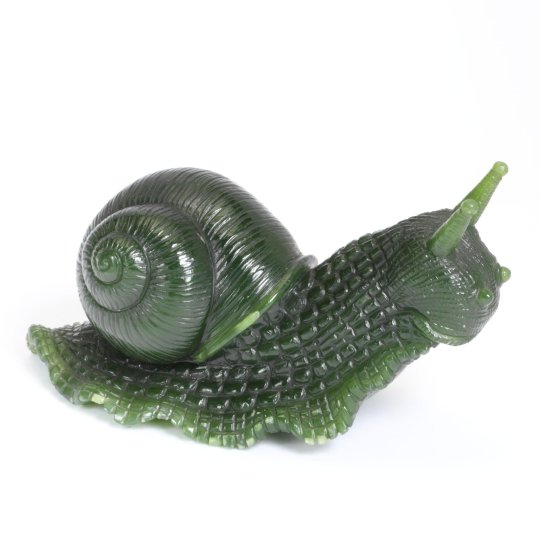
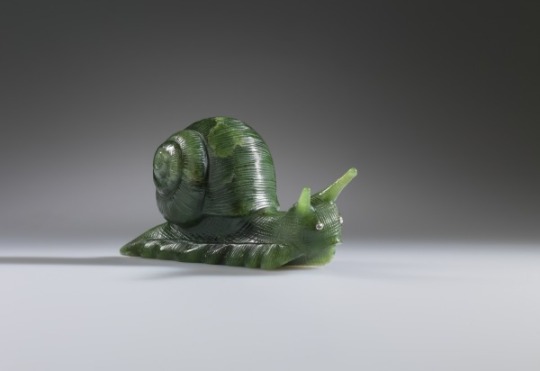
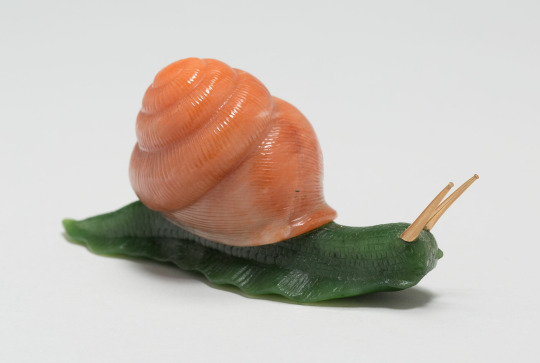
For a slow Sunday here are some Fabergé nephrite jade snails from Russia:
Carl Fabergé, late 19th/early 20th century, carved nephrite jade, 4.8 x 8.1 x 3.2 cm, Victoria and Albert Museum
Fabergé Workshop, c. 1900, carved nephrite jade with diamond eyes, 5.5 x 12.3 x 4.1 cm, Cincinnati Art Museum
Fabergé Workshop, c. 1885-1905, carved nephrite jade with rose aventurine quartz shell and gold tentacles, 4.9 × 4.8 × 10.8 cm, The Art Institute of Chicago
#Fabergé#Russian art#decorative arts#figurines#jade#nephrite#gemstones#carving#19th century art#20th century art#Art Nouveau#snail#snails#Victoria and Albert Museum#Cincinnati Art Museum#Art Institute of Chicago#animals in art
534 notes
·
View notes
Text
Many people know that russia is afraid of Poland, but not many people know that russia is afraid of Lithuania too. Russia is afraid of Lithuania A LOT, and you probably want to ask me: Why? Lithuania is such a small country.
Well, you see, russia is actively spreading the "Great Russia as the Kievan Rus true inheritor" idea, completely erasing Ukrainian and Belaruthian histories. It's easy to do because you just need to change all "Rus" to "Russia", mix information like a smoothie, so that people are not able to distinguish Ruthenian from Ancient Ukrainian from Rusyn languages, and that implies that Ukraine and Belarus suddenly popped out in 19th-20th century. Very convenient, especially knowing that russia popped out in the 17th-18th century.
Very convenient that the Polatsk chronicle was stolen and then destroyed in moscow in 1812. We can't check it anymore and see what Belaruthians wrote about Kyivan Rus.
However, the Lithuanian documentation exists.
Lithuania nowadays is the only owner of the word "Ruthenia." Not russia, not even Rus - Ruthenia, an official Latin form. There are also maps that mark Ruthenian territories, which are strikingly similar to modern Ukraine and Kyivan Rus. The Ruthenia concept itself does not fit into the fairytale about Great Ancient Russia at all. In fact, it destroys all the russian myths about Ukraine and Belarus in Kyivan Rus times.
Russia hates Lithuania so much it doesn't want to admit that Lithuania used to be their ruler, in case of the Great Ancient Russia concept, lmao. Lithuania and Ruthenia do not fit into the Great Russian History at all. But GDL existed, and it pisses russia off A LOT. If there is Ruthenia-Ukraine, there is also Baltic Ruthenia Baltarusija Belarus - not "White Russia". Which makes Lithuania a culturally legitimate contender of these lands.
What frightens russia even more is that Lithuania technically can restore the GDL in 3 days (c) if they wanted to. And they wouldn't have to use tanks and missiles for that. Everyone just likes Lithuania, Belarus and Ukraine are fucking sick of russia already.
Lithuania for russia is a very dangerous opponent. It's very hard to become the enemy of Lithuania, they always try to befriend everyone, but if you managed to, you're pretty fucked up. :D
73 notes
·
View notes
Text

Teffi, 20th Century Russian Poetry: Silver and Steel, from 'Before the Map of Russia', tr. Albert C. Todd
TEXT ID: I will touch your dress quietly with my hand And with this hand cross myself.
#teffi#20th century russian poetry#before the map of russia#poetry#excerpts#he seems to me equal to gods that man#o
399 notes
·
View notes
Text
Another Wikipedia featured article poll, but it's hand-curated this time. Links and summaries below the cut.
A History of British Fishes is a natural history book by William Yarrell, serialised in nineteen parts from 1835, and then published bound in two volumes in 1836. It is a handbook or field guide systematically describing every type of fish found in the British Isles, with an article for each species.
The Battle of Lake Trasimene was fought when a Carthaginian force under Hannibal ambushed a Roman army commanded by Gaius Flaminius on 21 June 217 BC, during the Second Punic War. The battle took place on the north shore of Lake Trasimene, to the south of Cortona, and resulted in a heavy defeat for the Romans.
Steller's sea cow (Hydrodamalis gigas) is an extinct sirenian described by Georg Wilhelm Steller in 1741. At that time, it was found only around the Commander Islands in the Bering Sea between Alaska and Russia; its range extended across the North Pacific during the Pleistocene epoch, and likely contracted to such an extreme degree due to the glacial cycle.
The Baker Street robbery was the burglary of safety deposit boxes at the Baker Street branch of Lloyds Bank in London, on the night of 11 September 1971. A gang tunnelled 40 feet (12 m) from a rented shop two doors away to come up through the floor of the vault.
On the morning of 6 December 1917, the French cargo ship SS Mont-Blanc collided with the Norwegian vessel SS Imo in the waters of Halifax, Nova Scotia, Canada. The Mont-Blanc, laden with high explosives, caught fire and exploded, devastating the Richmond district of Halifax.
The nature fakers controversy was an early 20th-century American literary debate highlighting the conflict between science and sentiment in popular nature writing. The debate involved important American literary, environmental and political figures.
The Spaghetti House siege took place between 28 September and 3 October 1975. An attempted robbery of the Spaghetti House restaurant in Knightsbridge, London, went wrong and the police were quickly on the scene.
Weird Tales is an American fantasy and horror fiction pulp magazine founded by J. C. Henneberger and J. M. Lansinger in late 1922. The first issue, dated March 1923, appeared on newsstands February 18.
In July 2017, the municipalities of Mahwah, Upper Saddle River, and Montvale in Bergen County, New Jersey, in the United States, opposed extension of an eruv within their borders. An eruv is a land area surrounded by a boundary of religious significance, often marked by small plastic pipes (called lechis) attached to utility poles.
The Makassar kingdom of Gowa emerged around 1300 CE as one of many agrarian chiefdoms in the Indonesian peninsula of South Sulawesi. From the sixteenth century onward, Gowa and its coastal ally Talloq became the first powers to dominate most of the peninsula, following wide-ranging administrative and military reforms, including the creation of the first bureaucracy in South Sulawesi.
65 notes
·
View notes
Text
City C, University P -- the way modern chinese names places
Alright, you may have come across such initial-based namings in books, danmei and other cnovels: City S, University P, C市 (City C), S大 (University S)
-- is it lazy translation? why aren't they giving places actual names?
A tad bit of informal history below:
When did it start?
As a person very much inexperienced in chinese historical literature, I couldn't say for sure either. But what I do know, is that it has been in writing since the 20th century (around the 1920s and after). You see renowned writers of that time like Lu Xun 鲁迅 and Zhu Ziqing 朱自清 using these initials.
(I don't have concrete examples in mind, so I'm flipping about what I have around me, and Zhu Ziqing and Lu Xun's books happen to be near me so -- let me use their works as examples of the day.)
There's this novella Lu Xun wrote, with a protagonist which he named 阿Q (read as "Ah-Q"). I also see in his short stories that he named a dog S, a side character 小D (Little D), and a city S城 (City S).
Zhu Ziqing tends to write more about realistic things that happen in his life in the form of short writings, and for that reason he uses initials way less. He did refer to a person by "Y" in one of the pieces though.
So what are they doing?
So around that time of Lu Xun (we're in the republican era) there's a movement called the May Fourth Movement, and out of the movement it spurred in the literary realm the New Culture Movement. I honestly don't want to go into the details and confuse everyone with my inexperience here, what is worth noting is that they began promoting "modern chinese" (白话 bái huà) over "classical chinese" (文言 wén yán). "Modern chinese" is the kind of chinese you read in cnovels and everywhere else nowadays.
And in this movement, they also advocated quite a lot of western ideas. This is where they proposed a complete romanisation of chinese characters, and probably to do with this, in their new modern chinese writings, they started using anglicised phrases like "City Y" and "Dog S".
All movements are controversial, their failure or success is controversial, I really don't want to get into past history so let's move on.
What they use now.
When journalling one's own experiences, important places and all that, obviously real places and names are used. Otherwise, in fiction, alphabetic initials are used in place, likely to 1. distance fiction from real life, and also I suppose nowadays 2. to avoid heated topics. For instance china may be referred to as 华国 (Huá guó), which probably makes things less sensitive and easier to handle.
again i really don't want to get into nations and stuff. let me literary-this meta out in peace.
How can I understand where means where?
It took me a while to get used to them, basically sometimes you can guess the place -- City B may be Beijing, C could be Chongqing, S could be Shanghai -- the big metropolitan cities. University T and P (or Q and B) would be Tsinghua and Peking University.
As for the other names, when they say University A or High School No. 1 it usually means the top school in the area, because (at least for high schools) that's how quite a number of schools are named. If you couldn't tell what the letter represents, it's probably a random one.
additional note: these initials are only used in modern and futuristic sci-fi novels (at least from what I've seen so far!) using letters in historical or historical fantasy ones would break the fourth wall quite a bit for me haha.
Addendum
See Guardian article linked in the comments should you be interested.
Some points of note, made up places have been used in other fiction too, to avoid trespassing geographical localities and cultures aboriginal to a group of people;
Russian novels also have used mysterious initials -- "in the town of P", this is in the 19th and 20th century -- so it may well have come from Russia instead of literature under greco-roman influence (excuse the terrible description) -- but likely it did result from the movements, that's what instigated modern chinese writing in the first place.
(yeah it's on my lack of russian classics perusal -- i'll rectify that some time.)
23 notes
·
View notes
Text
My Trip to Austerlitz (pt. 1)
The sequel to last week’s My Trip to Koniggratz! expect pictures of museums, fields, and heavy MilHist nerdery.

The battle of Austerlitz was fought near Slavkov in what is now the Czech Republic on 2 December 1805 between Napoleon’s French Grande Armée (c. 70,000 strong) and the allied forces of Russia and Austria (c. 90,000). It is generally considered Napoleon’s greatest victory.

The battlefield is big, stretching over thirteen kilometres and incorporating half-a-dozen villages. The main feature is a low ridgeline known as the Pratzen Heights, and the village of Pratzen itself, which sits at its base. There’s a museum on the heights dedicated to the battle.

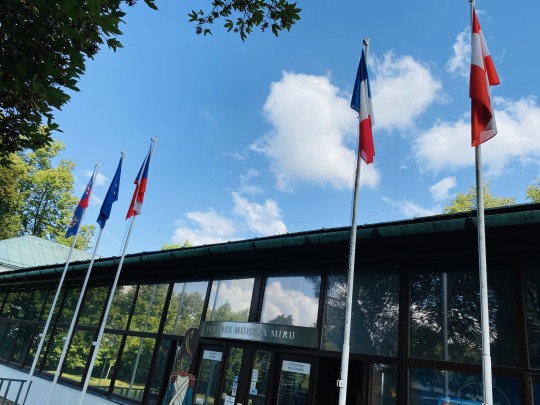
Needless to say, it has the obligatory uniforms.


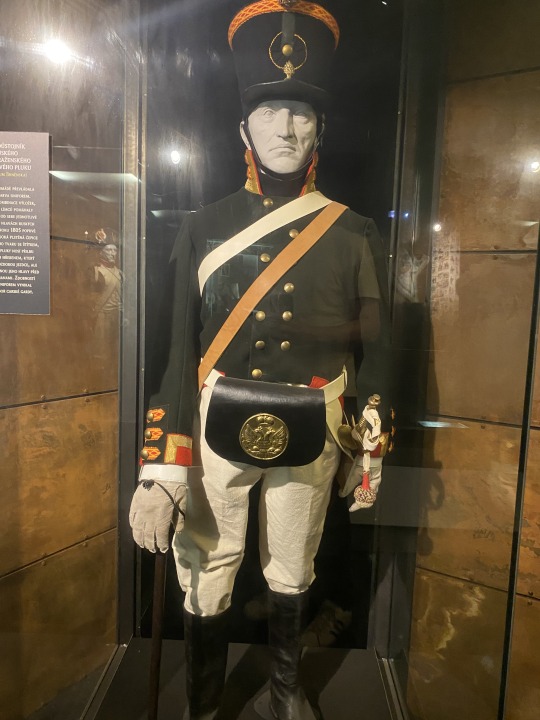

And the obligatory cannon. The battle is sometimes known as the battle of the three emperors after Napeoleon, the Russian Tsar Alexander, and the Austiran emperor, Francis II.
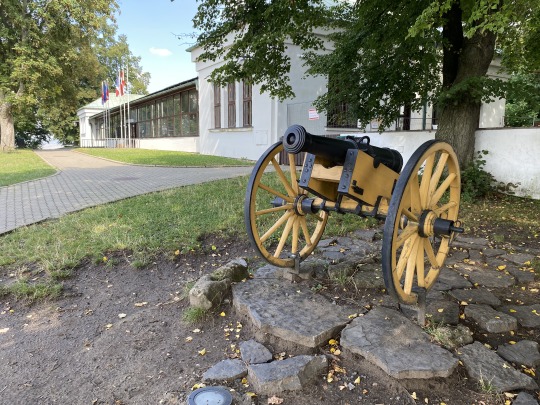
Outside is the Cairn of Peace, built in the early 20th century.

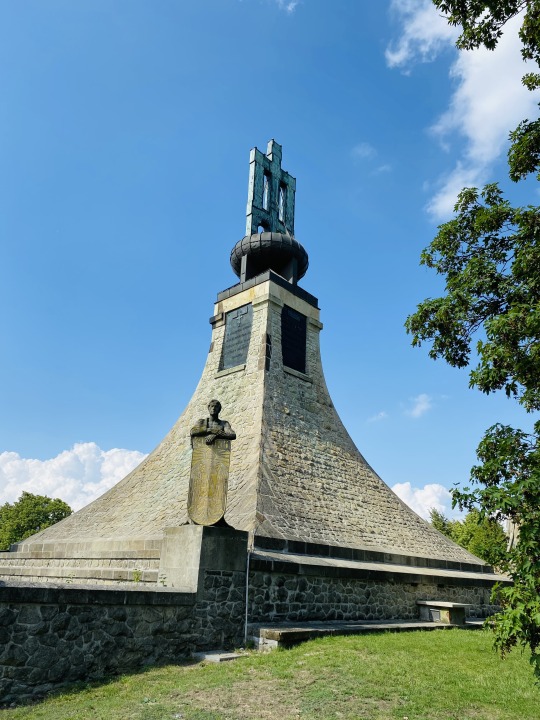
Napoleon’s army, outnumbered, had been withdrawing before the Russo-Austrian advance throughout late November 1805. Hoping to lure his enemies into a decisive battle, he deliberately abandoned a strong position on the Pratzen Heights, hoping to lure the Allies into taking it. They duly did.
Napoleon adopted a defensive stance along a stream known as the Goldbach. He deliberately weakened his right flank at the villages of Tilnitz and Sokolnitz, hoping the Allies would try and attack him there while knowing he had reinforcements marching from Vienna bound for that location.
While the Allies were lured off the heights they had first been lured onto, Napoleon would then strike at their weakened centre, taking the ridgeline.
The battle began early on 2 December with an Allied assault on the village of Tilnitz. This quickly spread to neighbouring Sokolnitz. Both locations were the scene of ferocious fighting throughout the day as they were taken and then retaken, possibly as many as five times.

These are barns in Sokolnitz that were using as strong points by both sides, and later as makeshift prisons for captured Russians.
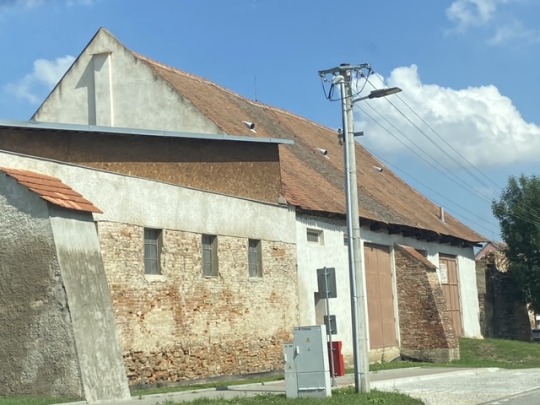
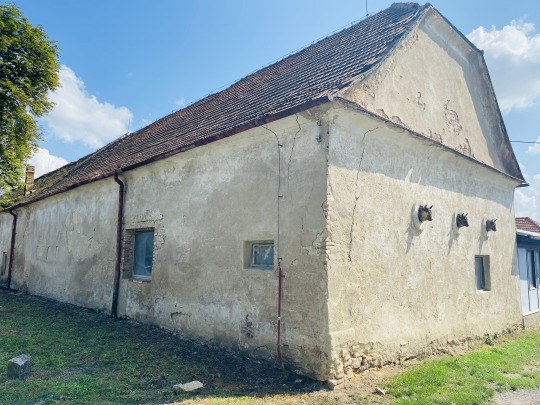
Sokolnitz castle, another centre of the fighting in this southern sector of the battlefield. It’s now an old people’s home.
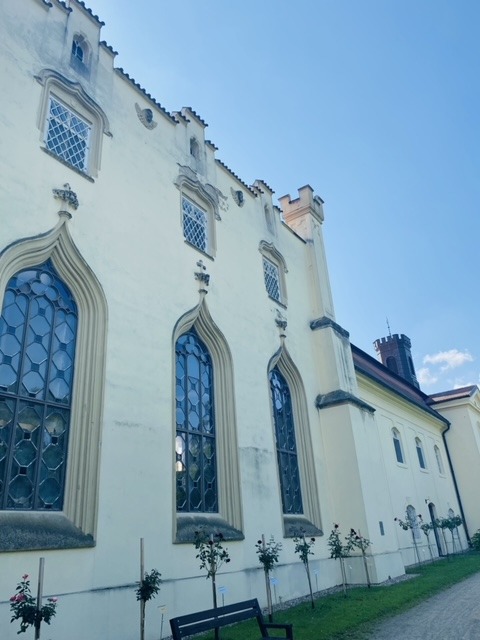
By mid-morning 3 of the 4 main Allied columns had moved down off Pratzen Heights to attack Tilnitz and Sokolnitz. The 4th was still on the heights however, as it had been disrupted by Allied cavalry who moved through it heading for the north of the battlefield.
General Kutuzov, a veteran Russian commander, didn’t want to leave Pratzen largely undefended, but the Russian Tsar, Alexander, ordered him down. Before he could, however, Napoleon struck.
This is the view from the highest point of the Pratzen heights looking out over Pratzen village towards the French centre. On the day of the battle there was a heavy fog, so it was impossible to see French forces massing for the masterstroke here.

The French advanced and, after overcoming their shock, the Allies scrambled forces to intercept and stop them seizing the ridgeline. Heavy fighting flared in Pratzen village itself, and along the slopes.

This is the view from the opposite side. Napoleon spent the morning on Zuran hill. Here we see what Napoleon would have looking towards the Allied centre on Pratzen Heights.


While all this was happening, fighting also flared in the northern sector of the battlefield, around the villages of Holubitz and Bosenitz. A ferocious cavalry engagement developed in these fields.

The deaths of an estimated 7,000 horses are commemorated here, on ground that now holds a functioning stable.
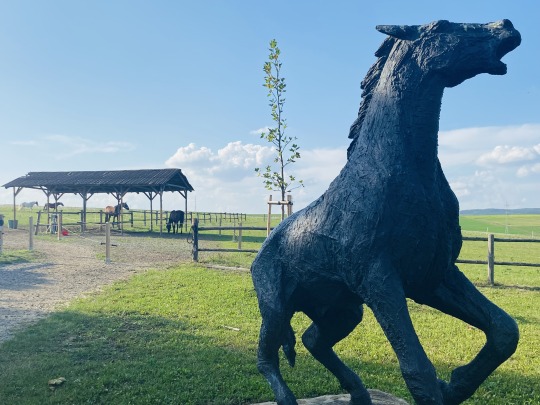
Both sides fought hard, but the French proved more adept at small-scale tactics, with proper support between infantry and cavalry, while the Allied cavalry tended to fight unsupported.
(There’s going to need to be a part 2 as I can only upload so many images to one post, thanks tumblr)
#austerlitz#battle of austerlitz#history#military history#napoleonic#napoleonic wars#19th century#napoleon
69 notes
·
View notes
Text

Lilya Brik photographed by Alexander Rodchenko, 1924
#1924#1920s#russia#20th c. russia#mdpcostume#vintage fashion#fashion#vintage#20th c. costume#photography#alexander rodchenko
235 notes
·
View notes
Text

Turtle Bell Push
c. 1895-1915
maker
House of Fabergé
(Russian, 1842–1918)
Russia, St. Petersburg, late 19th-early 20th Century
Agate, gold, silver, diamonds, rubies
Cleveland Museum of Art
50 notes
·
View notes
Text
Matriarchy, Feminism and 8th of March

First of all I might say that everything I am doing is inspired by women and for women.
And of course this day is not about showing the love , because love is an action ( according to E.Fromm) , which should be done /manifested every day.
This day is actually about the woman rights and power , and about remembering of those who was fighting for this rights.
Women received the right to vote during the 20th century:
Earliest 1910s - US
And one of the latest in Europe is Spain - 1970s
One of latest countries where women received the right to vote is Saudi Arabia in 2015.
In 2023 Vatican still not says if women could vote.
2020
The UN theme for International Women's Day was: 'I am Generation Equality': Realizing Women's Rights'.
March in Pakistani called «Aurat March» was marred by attacks from stone throwers, after a failed attempt to have it banned as un-Islamic.
And this is happening in 2020 !!!
In April 2019, cleric Jawad Naqvi had called march organizers "the most evil of all women".
In Bishkek, the capital of Kyrgyzstan, police detained dozens of marchers shortly after masked men reportedly attacked the march.
And the most terrible things are happening now in Iran , where people are shooted from machine-guns for support of women rights
Not-surprising that russia and Iran are united, because they are the same kind of evil and yearn for each other.
But it wasn’t always like this.

The thing is that living in some period of time we accept some things (social constructs for example) for given. We refer for some concepts as static , however history shows us that they are not.

If we refer to the most ancient myths , we can discover that the primordial and supreme Deity was Goddess , thus Woman
In Greek Mythology - Gaia - is Mother Earth, her husband is Uranus. Her first sun - Kronos , and after son of Kronos - Zeus seized power in Olympus.
In Shumer Mythology this is Istar.
«The idea of primal female deity , first adored , then brutally side-lined by a male deity is a consistent theme in mythologies around the world.
The Tantrik tradition of India speaks of the primal one, Adya, who took the form of a bird and laid three unfertilised eggs from which were born Brahma, Vishnu and Shiva.
Egyptian mythology acknowledges a time before gender. Then there was Atum, ‘the Great He-She’, who brought forth the god of air Shu and the goddess of dew Tefnut who separated Geb, the earth-god, from Nut, the sky-goddess, who gave birth to Isis and Osiris, the first queen and king of human civilisation. Then Seth killed Osiris and declared himself king, until Isis gave birth to Horus and contested his claim.
In these stories from around the world, the male deities compete for the female prize. This can be traced to nature, where all wombs are precious but not all sperms. So the males have to compete for the female. In many bird species, the female chooses the male with the most colourful feathers, the best voice or the best song, or with the capability of building the best nest. In many animal species, such as the walrus and the lion, the alpha male keeps all the females for himself; thus there are always ‘remainder’ males who do not get the female. This selection of only the best males creates anxiety amongst the not-so-good males and translates into the fear of invalidation in the human species. To cope with this fear of invalidation, social structures such as marriage laws and inheritance rights come into being, often at the cost of the female.
As human society learnt to domesticate animals and plants, trade and build cities, we see a gradual shift in social laws, deterioration in the status of women, and rejection of Goddess-worship in favour of God-worship.»
(C) Devdutt Pattanaik - 7 Secrets of Goddess

A few anthropologists even argue that Krishna’s dance Raasa-Leela may have its roots in old matriarchal tribes where the women valued only one male of the village.
In such female-dominated cultures, the male could not refuse the woman: in the Mahabharata, when Arjuna refuses her advances, Urvashi curses him to turn into a eunuch. Any man who forced himself upon a woman was killed.
To ensure that the dominant males did not have exclusive and eternal rights to women, the ritual of killing the chosen males at regular intervals emerged.
The only way to survive being killed at the end of the term as king and consort of the Goddess was by castrating oneself. And so in the Near East, the priests of Cybele, called the Galli, ritually castrated themselves emulating Attis, the castrated son/lover of the goddess.
Of course that are rather bloody practices , but now the pendulum has swung in another direction.

In Astrology the 8th House represents all the Unknown , Mystic , Sex and Death.
The connection of Sex and Death we can trace in myths across the Globe as well.
The close connection of sex and death, sex and pleasure, and pleasure with women led to that men began to associate women with amorality , suffering and vulnerability.
Renunciation of women guaranteed freedom from suffering.
This we can trace in Biblical mythology: Samson succumbed to passion for the insidious Philistines Delilah and losses his power.
In Buddhism the daughters of Mara ( the greatest Demon) are associated with decay sickness and death. Rejecting them Gautamma Siddhartha gained freedom from suffering.
In Tantra and Yogic tradition we have practice called - Brahmacaṛya ( celibacy ) which is supposed to give a mystical powers called «Siddhi»
We can see how along the course of history men tried to cheat biology.
Also in Hindu there is a tradition called «Sati» ( in name of wife of Shiva who stepped into the fire ,when her husband was offended)
It is supposed that the fidelity of a woman gave her magical powers. This believe in «sati» has led to concept - if man died for whatever reason , it was the cheating wife who couldn’t prevent it. She was encouraged to burn herself on a funeral pyre to prove her purity.
The time goes on and there is a power struggle in the cities - and women becomes a trophy in this game - «Helene of Troy»
All this leads to the isolation of women for their «own safety»
Woman become a commodity , she loses the ability to control her life and her body.
At some time the men took over all economic activity , and the only activity available for women was a temple prostitution.
The body of woman, so as the land was owned by a father, brother, husband and even son.
The main reason of invention of the proprietary rights - is the fear and insecurity of men.
Gradually, the gaze turned upwards towards the sky. Gravity became a fetter, the earth a trap, and women bondage. Escape was sought. The serpent, messenger of the goddess, was rejected in favour of winged beings or angels who take humanity to ‘higher’ realms, above the earth.
In biblical mythology, the serpent becomes the symbol of the Devil, he who disobeys and tempts others to disobey. God, who makes all the rules, becomes male and resides in the sky. Prophets carry his word to earth. They are mostly male: Abraham, Moses, Jesus, Muhammad. They overshadow the few female prophets: Miriam, Deborah and Anna.

In Hindu Mythology Serpent represents many things:
Wisdom ( we can see it always on the neck of Shiva)
Kundalini Energy

Before those who looked at the earth below saw it as the Goddess, manifesting in pairs and triads, embodying the paradoxes of the world. There was Ishtar, the fertile, and Ereshkigal, the barren, in Sumerian mythology; Kali, the wild, and Gauri, the domestic, in Hindu mythology; the cow Hathor and the lioness Sekhmet of Egyptian mythology. In Greek mythology, there are the Fates triad who spin thread, the length of which determines the duration of human life, and the Grace triad who constitute the three seasons of spring, summer, and winter. Thus, the world is seen in feminine terms.
In Christianity now the only one image on woman is the Virgin Mary, but only because she was a mother of God.
In Islam the only one image is « Fatima hand» , the daughter of Prophet.
Why not so many ?
As you can see this turmoil and pendulum , which shifted from one side to another.

Great honor and praise to the feminists who fought for women's rights
But what modern feminism offers?
It says that woman must struggle to win in a man-game. In patriarchal social structure controlled by men. This is thinking inside the box - which is leading to nowhere.
- - - - - -
On other hand women should accept the feminine nature and allow it to manifest itself , beyond this social construct.
Social construct is a human made creation. But nature it is something deeper, something which corresponds to our soul, psyche , genetics.
It is more profound , and beyond any social construct. Society is always changing, but archetype of the primordial wild woman is something which may last even beyond the time unchanging.

As Dr. Clarissa Pinkola Estés says the one may address this archetype to discover one’s nature through many things such as:
Dreams
Instincts
Intuition
Acceptance of different aspects of the divine in oneself

Archetype of Primordial Woman is the basic archetype , based on which various Goddesses , representing various aspects of Psyche emerged.
One of such Archetypes is Greek Goddess - Baubo.
Known as the goddess of mirth, she is depicted as bawdy and sexually liberated.
In Hindu mythology Deities always have pairs.
Wild Kali awakens Shiva to life with her passion, without her is only a shava ( corpse)
When Mahishasura is threatening the World and even Brahma, Vishnu and Shiva cannot defeat him , then devas ask Goddess for help .
And Durga , Mahadevi slays him.

Hindu mythology with its variety of Gods and Goddesses didn’t lost the feminine and masculine balance.
In conclusion
I think it’s time for Man to evolve above the fear of insecurity and start working towards the World where Woman can manifest herself freely.
I am sure it would be a much better place.
Reference and further reading :
Mostly this text in inspired by great writer and mythologist -
Devdutt Pattanaik. I quote many thoughts from his book " 7 Secrets of Goddess"
Clarissa Pinkola Estes:
"Women Who Run with the Wolves: Myths and Stories of the Wild Woman Archetype"
Erich Fromm: " The Art of Loving"
#astrology#dharma#philosophy#pscyhedelic#matriarchy#feminism#woman rights#balance#archetype#psyche#psychology
2 notes
·
View notes
Text
Languages of the world
Karaim (karaj tili/къарай тили)
Basic facts
Number of native speakers: 80
Recognized minority language: Poland, Russia, Ukraine
Also spoken: Lithuania
Script: Latin, 31 letters/Cyrillic, 39 letters
Grammatical cases: 7
Linguistic typology: agglutinative, SVO
Language family: Turkic, Common Turkic, Kipchak, Kypchak-Cuman
Number of dialects: 2 main groups
History
17th-20th century - the Hebrew script is used
1920-1930 - the Latin alphabet is used exclusively
Writing system and pronunciation
These are the letters that make up the Latin script: a b c ch č d d’ dž e ė f g h i y j k l m n o ö p r s š t u ü v z ž.
These are the letters that make up the Cyrillic script: а б в г гъ д дж е ж з и й к къ л м н нъ о ӧ п р с т у ӱ ф х хъ ц ч ш щ ъ ы ь э ю я.
The letters -е-, -ю-, and -я- are only used after -л- to indicate palatalization, while -ж- and -ц- are only used in Russian loanwords.
Grammar
Nouns have two numbers (singular and plural) and seven cases (nominative, genitive, dative, accusative, ablative, locative, and instrumental).
There are no prefixes, but postpositions are used.
Verbs are conjugated for tense, mood, person, and number. A notable feature of Karaim is the possibility of abbreviated verb forms.
Dialects
There are two main dialect groups: Eastern and Western. Eastern Karaim includes Crimean Karaim, which is now extinct. Western Karaim includes Trakai-Vilnius and Lutsk-Halich. Both dialects differ in phonology, morphology, syntax, and vocabulary.
7 notes
·
View notes
Text
Finished my amrev final. Pulled a bunch of shit out of my ass, especially with federalist no.10 and shays rebellion
This semester of college is finally done tho thank god. I only get a week break before going for 20th c Russia and pirates class (which isn’t actually about pirates)
13 notes
·
View notes